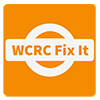The roadside right-of-way serves many purposes– it provides space to escape crashes, creates a sense of openness that contributes to driving ease, improves sight distances, provides space for maintenance activities, such as snow removal and storage, and provides an area that allows for proper road drainage. However, overhanging trees, brush and weeds can grow into a serious safety concern for road users, especially in and around power and telephone lines, highway medians and along the roadside.
The Washtenaw County Road Commission (WCRC) has developed a Tree Policy 2021 and Roadside Vegetation Control Program (see below) to help keep the roadside right-of-way reasonably clear. This two-prong approach is designed to contain roadside vegetation that could obstruct motorists’ vision, obstruct the traveled portion of the roadway, create drainage problems or cause snow/ice problems if left unchecked.
Roadside Vegetation Control Program
Roadside mowing
WCRC uses a subcontractor to perform roadside mowing. Per their contract, they will mow along paved county roads twice and unpaved county roads once throughout the season. They do not mow along subdivision roads. The contractor is responsible for the scheduling of mowing to mow through the county most efficiently. They generally work on a township-by-township basis. Click here to read more about WCRC’s roadside mowing program.
Mechanical brush mowing (Boom Mowing)
WCRC crews use a specially designed brush mower to cut back roadside brush. This equipment will focus on clearing brush that is 2” in diameter or less. This mowing will be done year-round, whenever the weather allows. Over the past decade, WCRC has not had the resources to mow brush. Fortunately, with increases to road funding from the state, WCRC is finally able to restart its mechanical brush mowing program.


